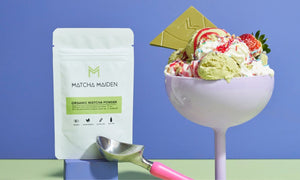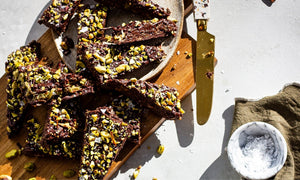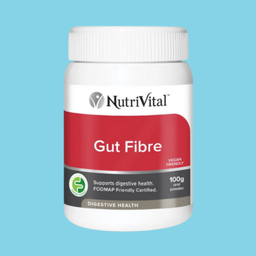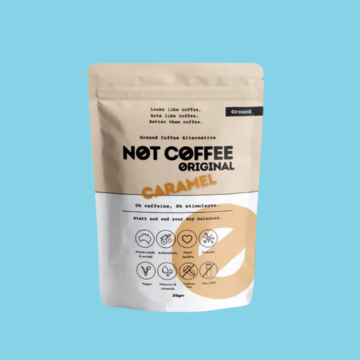Written By  Guest Writer Tanya Hollis
Guest Writer Tanya Hollis
blog

![]()
Collagen 101
Tanya Hollis explains what you need to know about the latest collagen products appearing on health shop shelves.
Collagen or gelatin? Bone broth or stock? Peptides and hydrolysates? Holy cow! Hang on; it’s not just from cattle? Collagen comes from pigs and marine animals, too? The health world is abuzz with the benefits of collagen and its many incarnations. But how does the typical punter choose one type from another?
“For starters, collagen and gelatin are the same thing,” explains Bruno Rossitt from the Aussie Gelatin Company. “Collagen occurs naturally in the body of an animal and when you extract it, it’s converted to gelatin.”
Collagen is a vital structural protein found in the connective tissue of animals, which supports cells, tissues and bones. Gelatin products are most often extracted from the hides of cattle that are preferably “grass-finished”, which means they have been pasture-fed their entire lives rather than being fattened up on grains and given steroids and antibiotics in their final months. Extracted gelatin contains a unique amino acid profile not found in plant-based proteins, which can support overall health.
“If your major concerns are gut health, appetite control or to reduce inflammation, gelatin is the go-to product,” Bruno advises, adding that it is best consumed as a warm drink.
Inexpensive, simple to prepare and less processed than other forms of collagen, gelatin works by coating the lining of the digestive tract, helping to draw water to the gut and healing any damage to the intestinal lining. Because gelatin needs to be broken down by the intestine, it sits in the stomach longer, promoting a full feeling that can help with appetite control.
To be most effective, gelatin requires “blooming”: a simple process that involves blending the gelatin with cold water until it is absorbed and takes on a paste-like consistency. By then heating it on a stove or in a microwave, the gelatin dissolves to liquid form and can be added to coffee, tea, hot chocolate, and even juice, so long as it stays above room temperature. As it cools it will begin to gel and become lumpy, making it difficult to drink – although this transformation can be useful in making healthful jellies and gummies. With it’s slower absorption level, gelatin’s bioavailability sits between 70 to 73 percent. But if it’s faster absorption and bioavailability of 90 to 93 percent, collagen hydrolysate could be your preferred option.
Collagen hydrolysate is created through a process in which the protein molecules in gelatin are cleaved down to smaller peptides and effectively predigested. This makes it much easier for the body to absorb directly where it’s needed. Bruno says that while collagen hydrolysate shares the same amino acid profile as gelatin, it is faster acting because the body can absorb it within half an hour. He said the smaller peptides make the product non-gelling and soluble in hot or cold water, making it a convenient addition to drinks, soups, breakfast cereals, milk, and yoghurt.
“It is still good for gut health, but if your major concern is to do with skin, hair nails, joint issues, recovery from injury, healthy ageing or sports nutrition, then collagen hydrolysate is the best choice because it gets into the cells faster,” Bruno says.
There are about 20 types of collagen found in the body, with types I and III the most common and the forms found in beef, pork and fish collagen products. Marine collagen is often held up as the preferred option for beauty treatments because of the presence of hydroxyproline, which is responsible for collagen stability, and other specific biological properties that are still being studied. While types I and III are extracted from beneath the skin, type II is drawn from bones and is the source of collagen found in bone broths.
Bone broth differs from stock in that it is generally cooked for much longer time, from 12 to 48 hours. Bruno says health-conscious populations have long understood the benefit of bone broths, boiling bones to extract essentials vitamins and minerals. “The additional benefits of bone broth is that you’re leaching out all the nutrients of the bone, which includes the gelatin, the marrow, glucosamines, and minerals,” he says. “It is so good for the gut with the minerals and nutrients being an excellent way to build up the immune system.”

Creamy Chocolate Breakfast
Image via Recipe Community
1 cup non-dairy milk of choice (or skim milk)
1/3 cup oats
1/2 banana
1 scoop of NutraViva Grass Fed Collagen Hydrolysate
1 heaped tsp raw cacao powder
6 almonds
5 ice cubes
Blend and enjoy!
A great way to boost collagen intake, keep you satisfied till lunch time and take charge of your general health and wellbeing.
Information presented is for information purposes only and is not intended to replace advice or treatment from qualified healthcare professionals. The information is not intended to treat or diagnose. Always consult your healthcare professional before taking nutritional or herbal supplements. If you are pregnant, breastfeeding, have any allergies or diagnosed conditions, or are taking prescription medications, always consult your healthcare professional before taking nutritional or herbal supplements.
Binge Read on these

Matcha Ice Cream
Cool down the natural way with this Matcha Ice Cream by Matcha Maiden.
101-Matcha-Benefits

Dubai Coconut Collagen Chocolate Bark
Indulge in this Dubai Coconut Collagen Chocolate Bark made with Nutraviva Collagen Hydrolysate.

Empowering Women: Navigating Perimenopause and Menopause

Matcha Ice Cream
Cool down the natural way with this Matcha Ice Cream by Matcha Maiden.
101-Matcha-Benefits

Dubai Coconut Collagen Chocolate Bark
Indulge in this Dubai Coconut Collagen Chocolate Bark made with Nutraviva Collagen Hydrolysate.

Empowering Women: Navigating Perimenopause and Menopause

